Kingdom Plantae Family Lamiaceae Scientific name Plectranthus esculentus Rank Species | Order Lamiales Genus Plectranthus Higher classification Plectranthus | |
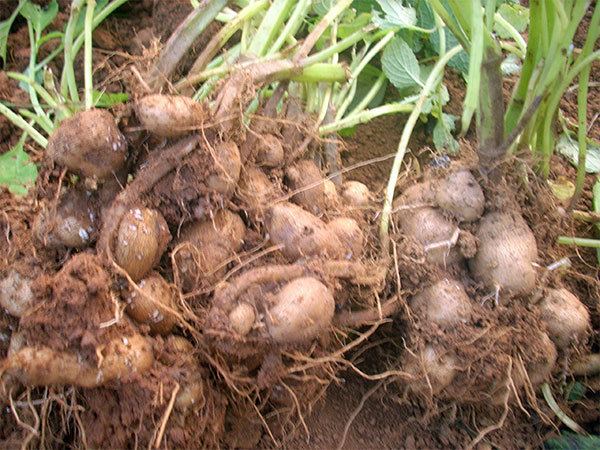 | ||
Similar Plectranthus, Lamiaceae, Plectranthus rotundifolius, Plectranthus edulis, Plectranthus parviflorus | ||
Harvesting potato mint for the first time plectranthus esculentus
Plectranthus esculentus, with English common names kaffir potato, and Livingstone potato, is a species of plant in the dicot family Lamiaceae. It is indigenous to Africa, where it is grown for its edible tubers. It is more difficult to cultivate than Plectranthus rotundifolius, but able to give greater yields. Although the crop is similar to a potato it is from the mint family but it is still quite nutritious and useful. This crop can benefit many subsistence farmers since it is native, easy to grow, growing popularity in the market and quite nutritious.
Contents
- Harvesting potato mint for the first time plectranthus esculentus
- Description
- History geography and ethnography
- Growing conditions
- Genetic stocks
- Consumption and use
- Nutritional information
- Economics
- Social gender and culture issues
- About the tubers
- Cropping
- Yields
- References

Vernacular names include dazo, rizga, umbondive, tsenza.
Description
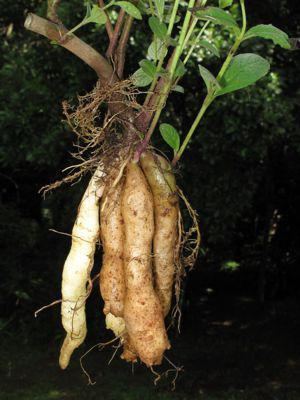
Plectranthus esculentus is a perennial dicot herb that is a member of the mint family . This herb can grow to be as tall as 2 metres. Some of the branches on the base bend down and grow into the ground that then can form oblong tubers, which are the fleshy underground stems. These tubers are edible and nutritious, often eaten as a substitute for potato or sweet potato. Although they are rarely seen because the vegetative reproduction is predominant, the plant also has yellow flowers. These flowers are two-lipped, and are on the short and crowded branches. While the plant is in flower the stems are leafless. Plectranthus esculentus has fleshy leaves, on angular stems. These leaves have brown gland-dots underneath and toothed edges. The tubers of this plant are quite important since that is the part of the crop that is used for sale, and farmer exchange.
History, geography and ethnography
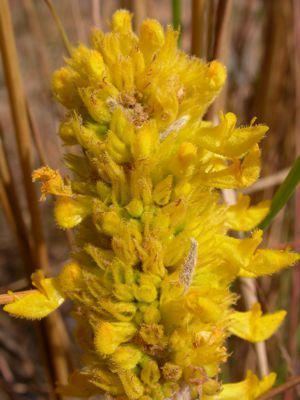
Plectranthus esculentus is indigenous to southern tropical Africa. It was also first cultivated in the Upper Niger valley of the Hausaland in Nigeria and in the Central African Republic. Although it is seen as a lost crop of Africa, and it was cultivated since pre-historic times, it is a crop that is still relevant today. The negative perception of this native crop has decreased the cultivation. But the social stigma is starting to diminish and it has started being grown for the commercial markets in Africa. In French the crop’s name is pomme de terre d’Afrique. In the Hausa language it is called ‘Rizga’.
Growing conditions
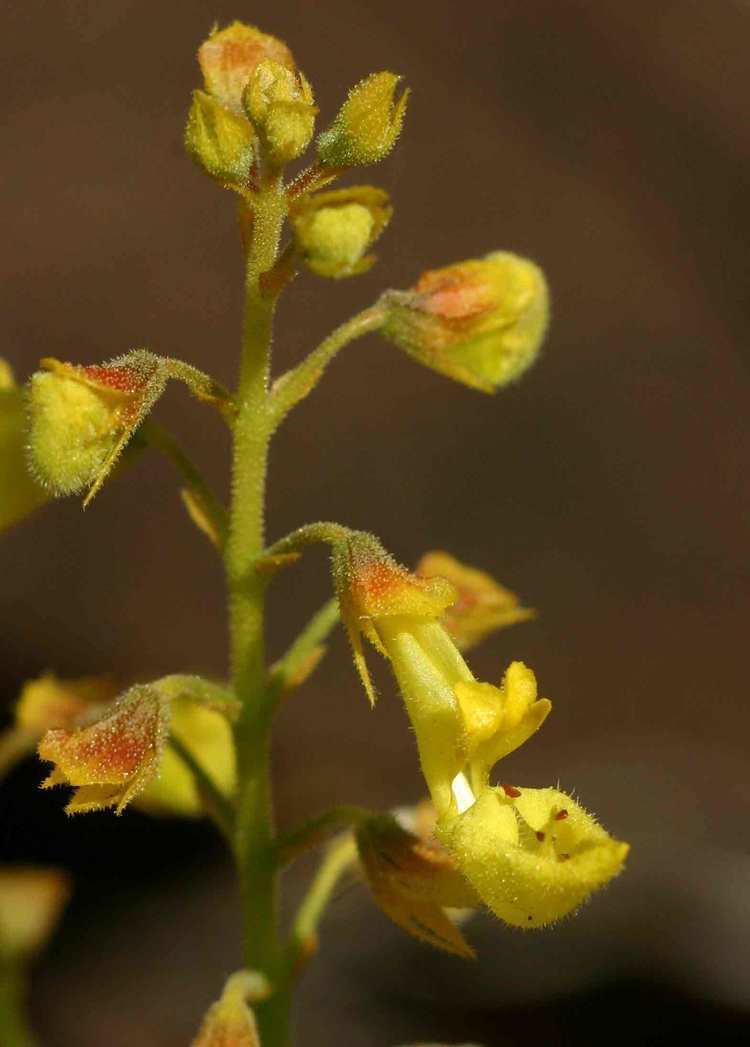
Plectranthus esculentus is propagated from tubers as well as small axillary bulbils. The tubers should be planted in the spring then harvest can occur the following autumn. Plectranthus esculentus can be harvested 180–200 days after it has been planted. The ideal soil to grow this tuber is a pH of 6.5-7, with an annual rainfall of 700–1100 mm. The ideal photoperiod for the tubers is between 12.5 and 13 hours. Plectranthus esculentus is exceptionally hardy and grown quite easily in regions without frost.
Genetic stocks
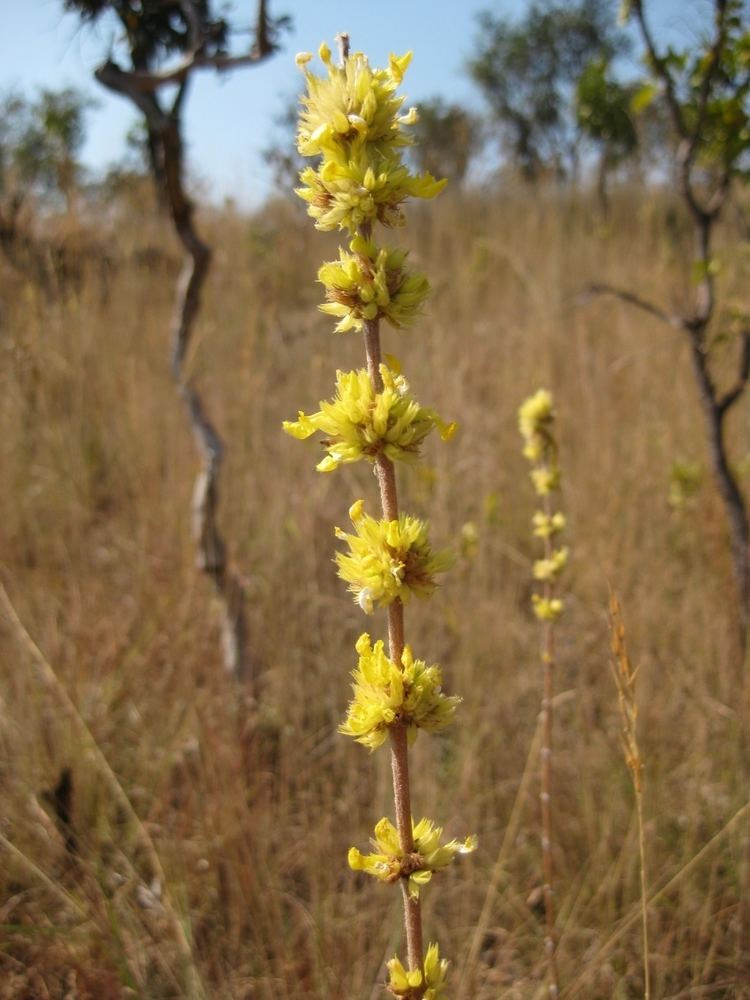
The Millennium Seed Bank Project has stored 6 seed collections and the germination testing has been successful. The seeds are dried, packaged and kept at below zero temperature in a seed vault.
Consumption and use

The tubers of Plectranthus esculentus are often used as a substitute for a potato or sweet potato. Directly after cultivation it can be boiled or roasted. The stems have been used to sweeten gruel (porridge). The leaves can be cooked in sauces as well. Plectranthus esculentus has been said to help with digestive problems also used to treat stomach ache and abdominal pain. It has also been used as anthelminthics.
Nutritional information

The fleshy underground stems, the tubers are the part of the plant that is consumed. This tuber crop is considered to be superior to other tuber crops in terms of its food value. In 100g there is:
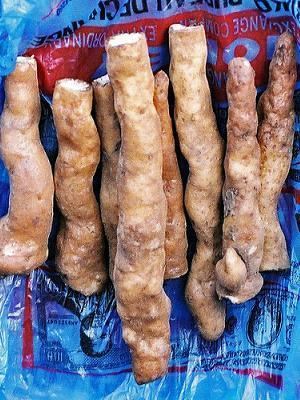
It is rich in carbohydrates, vitamin A, minerals, and essential amino acids. Plectranthus esculentus has contributed significantly to rural diets.
Economics
In 2001-2002 farmers were able sell 250 g of this crop for up to Rand 5 (US$1), which is higher than the price of an Irish potato. Communities can also sell the cooked leaves for Rand 7 (US$1.30). There is this cash demand for Plectranthus esculentus but it is typically exchanged between neighbours and friends.
Social, gender and culture issues
Women have high knowledge of this crop including nutritious value and cultivation practices because it is indigenous. This is an advantage for farmers since they have the initial knowledge to grow this crop and the potential to be successful in the first season of harvest.
About the tubers
The tubers are the most important in Plectranthus esculentus. They are nutritious and easy to grow and getting easier to sell. The tubers are able to remain viable underground even when the plant is not able to produce leaves. Plectranthus esculentus has been able to adapt well to various environmental conditions but does best in local environmental conditions where there has been a history of cultivation like in Southern Africa. Women who are trained in a community are able to manage the production of Plectranthus esculentus with little supervision.
Cropping
The tubers have been planted in small plots of 10 by 10 metres. In these small plots they were planted between young eucalyptus trees, using a mixed cropping system that had vegetables like amaranthus and cucurbits. They have also been intercropped with maize but when that proved to be unsuccessful. Yields were lower when intercropped with maize.
Yields
Some of the tubers that are cultivated can weight up to 1.8 kg. Yields of 2-6 tonnes per hectare have been seen before. As well as yields of 70 tons per hectare were documented when the leaves could be harvested. They were harvested on a two-week interval and over a period of six weeks. Yields will depend on weather conditions and the various types of soil so it is important to keep these in mind.
